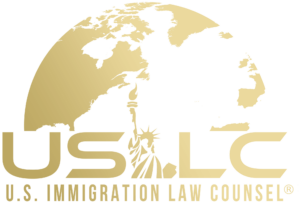If you are a foreign medical graduate, you may be considering getting a J-1 visa waiver for doctors. This is a great option if you want to pursue a career in the United States while utilizing your education in the medical field. However, like any other immigration avenue, there are many challenges you may face when applying for this visa. Here is everything you need to know about the process of getting a J-1 visa waiver for doctors, the two-year home residency requirements, and the average processing timeline.
What is a J-1 Visa?
The United States offers many work-and study-based exchange and visitor programs for foreign nationals, including the J-1 visa. These foreign nationals include:
- Students
- Professors
- Specialists
- Research assistants
- Teachers
- Scholars
- School counselors
- Physicians
One of the many benefits this visa provides is the J-1 waiver for doctors, which allows you to pursue a medical career in the United States. Many physicians and medical graduates take advantage of this for the purposes of completing their medical education or going through additional training programs.
If you want to apply for a J-1 visa as a foreign medical graduate, you need to get the assistance of a J-1 waiver attorney. This can be quite a complex process, and an attorney can help ensure you have done everything correctly and don’t run into any issues.
Process for Filing a J-1 as a Medical Graduate
If you are a medical graduate who wants to obtain a J-1 visa, you may be required to complete certain educational or training programs in your home country to qualify for the U.S. programs. There may be other requirements as well that will vary depending on your background, your plans, and your home country.
If you meet these requirements and wish to proceed, here are the steps you need to take to qualify for a J-1 visa waiver for doctors:
- Half passed the USMLE.
- Have an ECFMG certificate.
- Have an official letter of offer for a position or contract in a program of graduate medical education or training within a medical school.
- Have a statement of need from the Ministry of Health where you were most recently a legal permanent resident.
Understanding The Two-Year Home Residency Requirement
Something foreign medical graduates need to understand about the J-1 visa is that it is subject to a two-year home residency requirement. This means that once your program of study has been finished, you will usually need to return to your home country for two years before you can come back to the U.S.
You may be subject to this requirement if your home country’s government or the U.S. government financed your visit to the U.S., or if your field of study is on your home country’s exchange visitor skills list.
J-1 Visa Waiver Eligibility Requirements
Depending on your future goals, the residency requirement can be a significant drawback. Because of this, you may be able to get a J-1 visa waiver to avoid this requirement. Here are some of the conditions that could qualify you for this:
- Your U.S. or green card-holding spouse or child would suffer exceptional hardship.
- A U.S. government agency has requested a waiver on your behalf because you are substantially and actively involved in a program or activity that is of interest or sponsored by the U.S. government agency.
- The state’s Department of Public Health has requested a waiver for you.
- You would experience persecution if you had to return to your home country due to political opinion, religion, or race.
Keep in mind that you need to provide a substantial reason for wanting to avoid the two-year home residency requirement, as well as have evidence to support this. For example, if you fear persecution or that your family will experience hardship, you will need to track down documents or expert statements.
Obtaining a Conrad 30 Waiver
If you can provide a good reason for wishing to bypass the two-year residency requirement, you may be able to apply for the Conrad 30 waiver program. The purpose of the Conrad 30 waiver program is to assist with the shortage of medical professionals in underserved areas of the U.S.
To qualify for this waiver program, you need to:
- Obtain full-time employment in H-1B non-immigrant status at a healthcare facility.
- Have an employment contract regarding your full-time work.
- Obtain a no-objection letter from your home country if that is where you received your funding.
- Be able to begin your employment within 90 days of receiving the Conrad 30 waiver.
Timeline Expectations
There are many variables that can impact the processing time for a J-1 waiver request, including your country of origin. However, most applicants can expect to wait anywhere from one month to six months if all goes smoothly.
It is strongly recommended that you get the assistance of a hardship waiver immigration attorney to help you with your application to ensure it is done correctly. This will reduce the risk of there being errors that could slow down your application. Additionally, if you do end up running into issues, your attorney can help you quickly resolve them.
Hire an Immigration Attorney Today
Do you want to continue your medical career in the United States with a J-1 visa waiver? Contact us today at U.S. Immigration Law Counsel at 800-666-4996 to speak with an immigration attorney about your situation. We will deal with the government, so you don’t have to!
FAQ:
What is the Conrad 30 program?
The Conrad 30 waiver program is one of the only options that allows physicians to get around the two-year home residency requirement. It allows this as a way of addressing the shortage of medical professionals working in underserved areas.
Can I apply for a green card while on a J-1 visa?
Turning a J-1 visa into a green card is a possibility if you wish to continue working and living in the United States long-term or indefinitely.
Is the J-1 waiver guaranteed?
Obtaining a J-1 waiver is not guaranteed, as you will need to provide adequate reasons for requesting the waiver. The reason for your request must outweigh the program and foreign policy considerations for the J-1 exchange visitor program.




